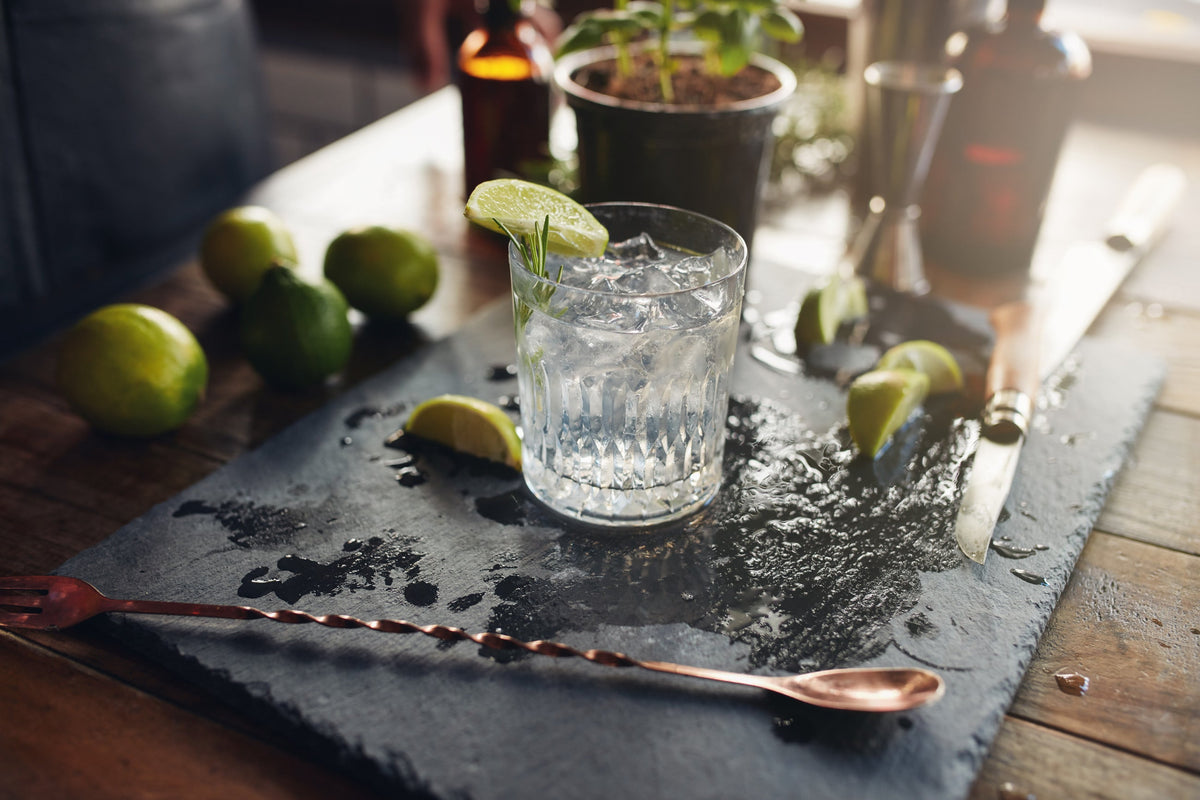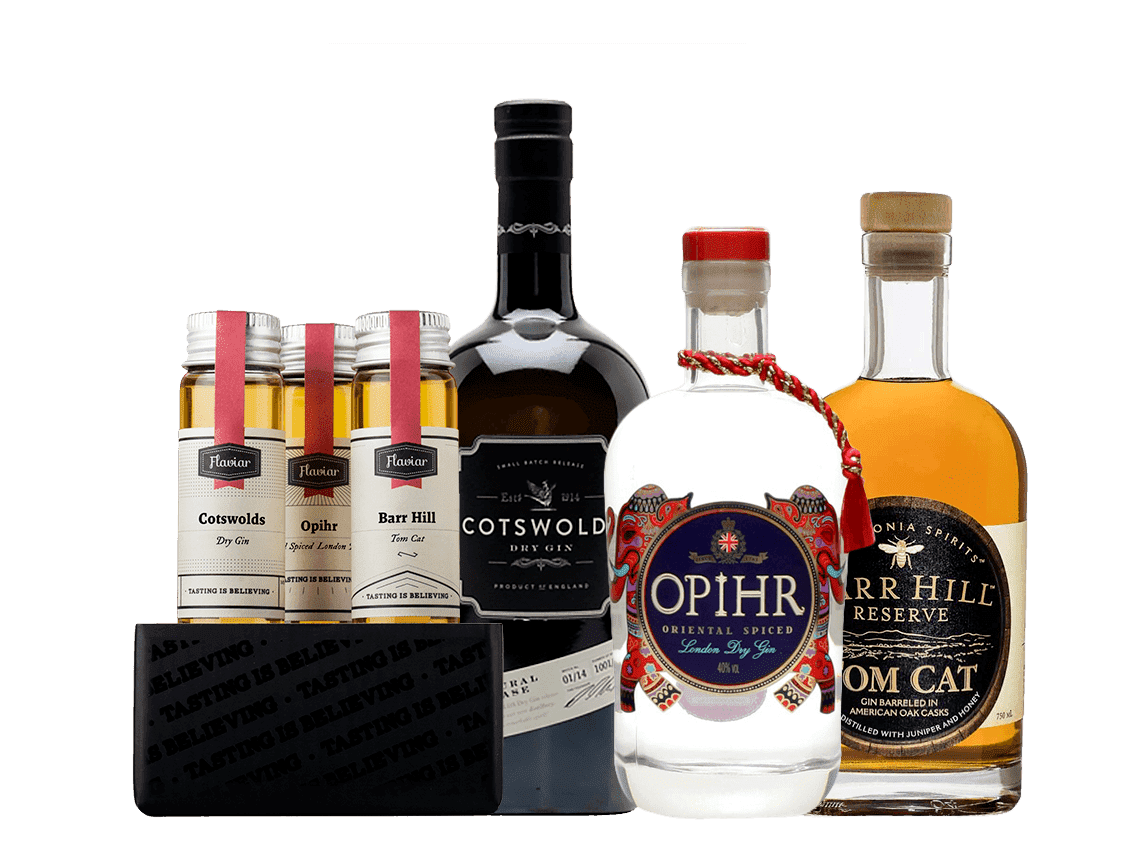
This is How You Make the Perfect G&T
|
|
Time to read 3 min

|
|
Time to read 3 min
Fish and chips, Posh and Becks, and Gin and Tonic – all classic British combinations and matches made in heaven. There's at least one of them you can master if you follow our tips.
Here is everything you need to know about the history of Britain's best-loved drink - Gin & Tonic. It was introduced by the British Army in India in the 19th century, where tonic water was invented to help battle malaria. The bitter-tasting quinine from the Cinchona Tree bark was mixed with sugar and water to create a better-tasting tonic. The soldiers mixed the tonic with their existing Gin ration, et voila! A star was born.
With the popularity of the G&T soaring over the past few years, gone are the days where you’d be given any old house (meaning unbranded, cheap and probably nasty) Gin and warm tonic water. Today, craft, small-batch Gins, and fancy premium tonic waters with various flavor combinations are king.
But to make a decent, classic Gin and Tonic, you really only need four things: the Gin, the tonic, a garnish, and ice.
The Gin in a G&T should always be a London Dry Gin, the most popular Gin style, and what most people think of as Gin. Its predominant flavor is juniper, although different flavors are added throughout the distillation process. Unlike the sweeter Old Tom or the meltier styles of Genever Gin, London Dry Gin makes a cracking G&T due to its dry, light nature.
These are the best Gin bottles to restock your home bar in 2021.
While there are many different flavors and styles of tonics available these days (pomegranate and basil, Mediterranean, and lemon tonic are just some of our recent favorites), the classic G&T should always be made with an Indian Tonic Water, just as the British Army intended.
We prefer less sweet styles for both the flavor and keeping the calorie count low - although be wary of low-calorie tonics, which add sweeteners in place of the sugar, and taste sweeter than the original style.
Fever-Tree makes a cracking Premium Indian Tonic Water, which can be found in bars and shops across the globe, but there are hundreds of small-batch tonic producers, each doing something special.
We’d recommend trying tonic water before mixing one with Gin – find something you like, which enhances the flavor of your chosen Gin, and then play around with the ratios of Gin to a tonic.
While the Gin: tonic ratio is very much a personal thing, you’ll find any decent bar worth its salt won’t pour out the tonic, so you can choose how strong to make your drink. Generally, a 1 : 3 is popular; those who like the flavor of neat Gin may prefer a 1 : 1 (or somewhere in between).
The age-old debate of lemon vs lime to garnish your Gin and Tonic with. While many of the bigger brands, such as Bombay Sapphire, Tanqueray and Gordon’s all opt for lime wedges, the purists often lean towards a slice of lemon for their garnish. The important thing is to match the garnish to the botanicals in the Gin to further enhance the flavor.
Many Gin brands will have a serving suggestion, such as Hendricks with cucumber, and Whitley Neill with orange. The important thing is to match the garnish to the botanicals in the Gin to further enhance the flavor.
Struggling to get your pairings right? Here’s a handy little guide to G&T garnishes:
Other popular garnishes include mango, strawberries, and even hibiscus flower.
Try before you buy. Discover Gin flavors with this themed Tasting Box. Turn yourself into a confident sipper, get exclusive tips of the trade, connect with a like-minded community and explore the contents of your Tasting Box with Flaviar-Exclusive guided tasting called Unboxing Flavors.

We’ve rounded up the best glassware for all of your favorite Gin drinks because let's be honest, presentation is almost as important as the drink itself – why do you think there are so many #cocktails on Instagram?
A G&T must always be cold. Store your tonic in the fridge, and fill your glass to the brim with cubed ice before pouring in any liquid.
If the glass is jam-packed with ice, it’ll take longer for it to melt, thus keeping your drink cooler for longer, and the cooler the drink, the slower the carbon dioxide is released from the tonic – meaning it will stay fizzy for longer.
Gin and tonics are great summertime drinks and a global favorite, but tonic water is loaded with carbs. Because of the added sugars of tonic water, a typical 210 ml serving can contain about 170 calories. If you are trying to lose weight, opt for low-carb mixers like diet soda, sugar-free tonic water, seltzer, or powdered flavor packets.
As you know, only practice makes perfect, so keep making G&T for your friends, they absolutely won't mind.


